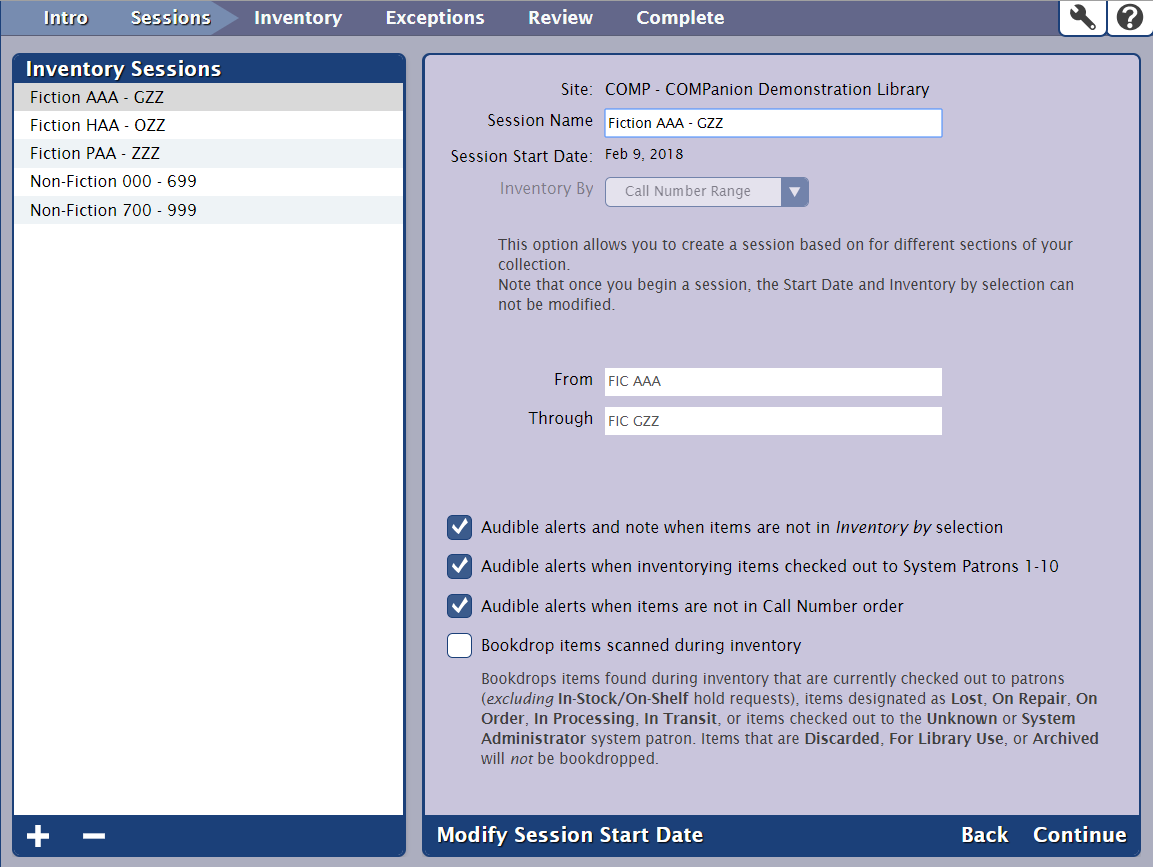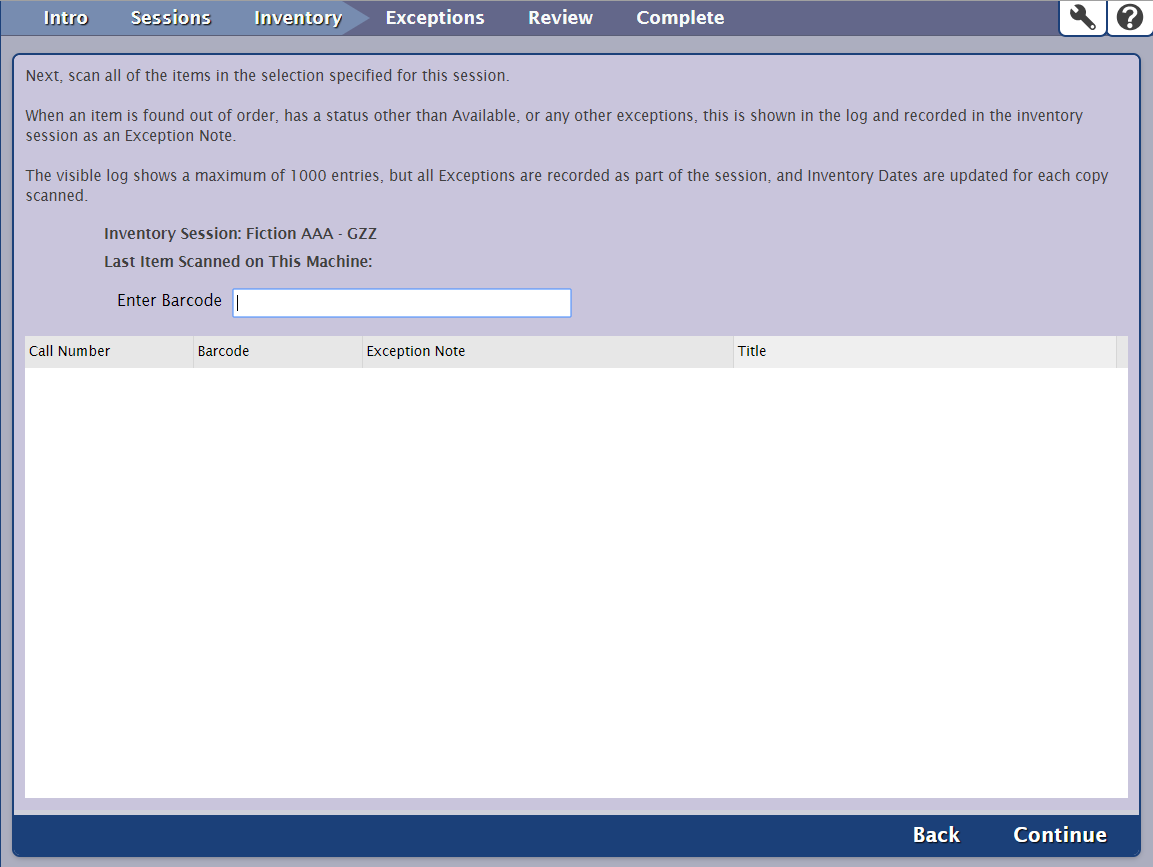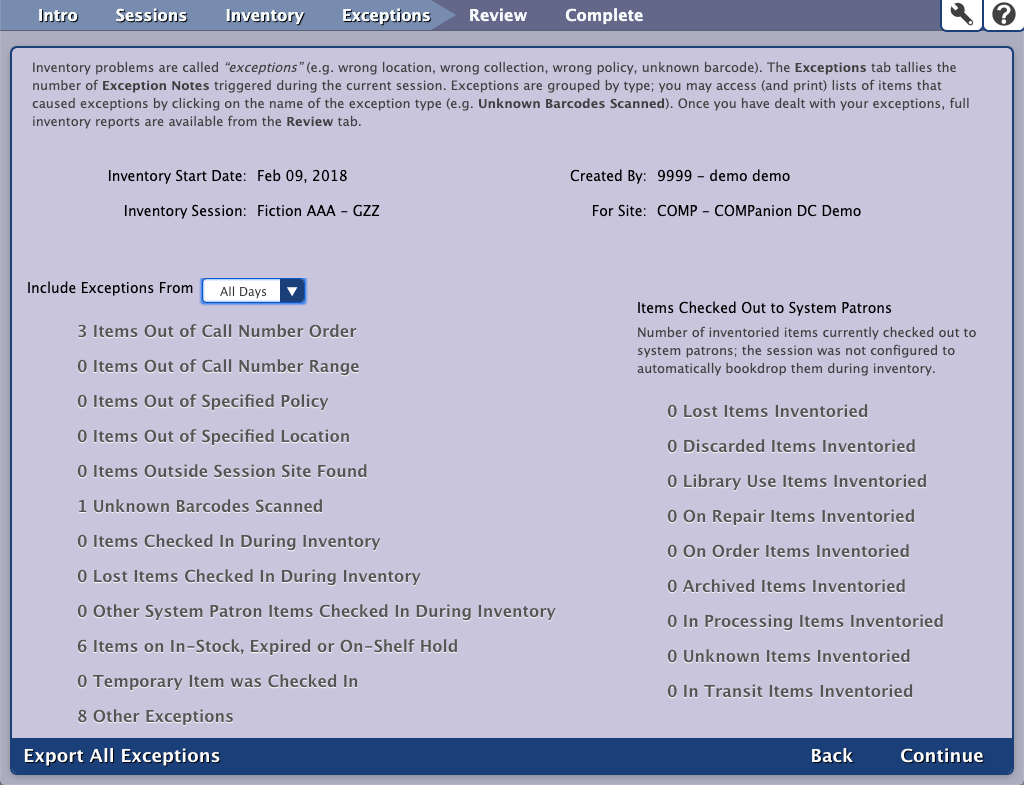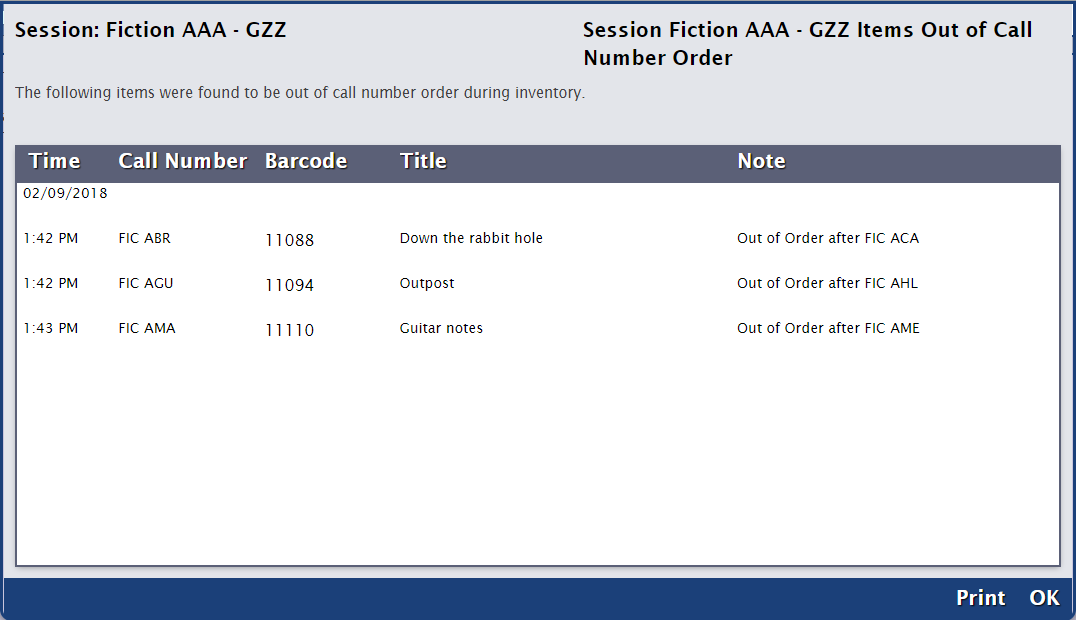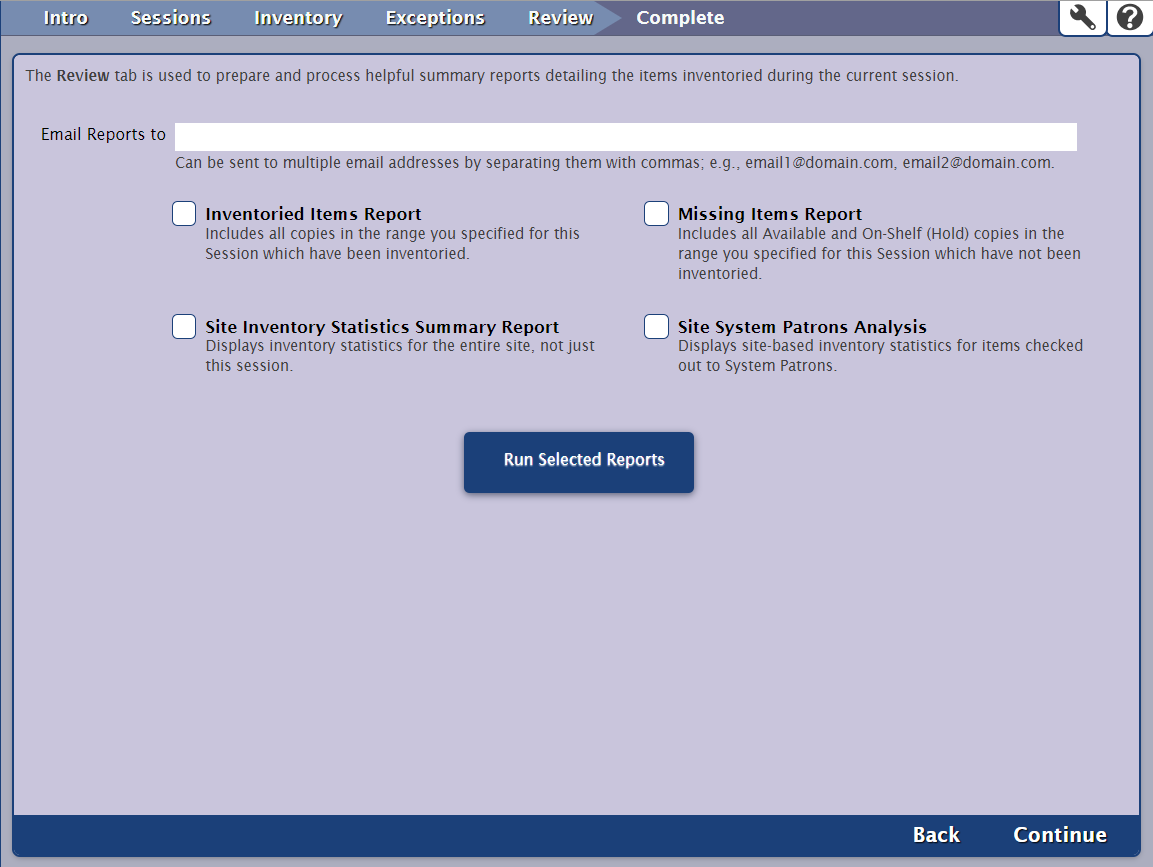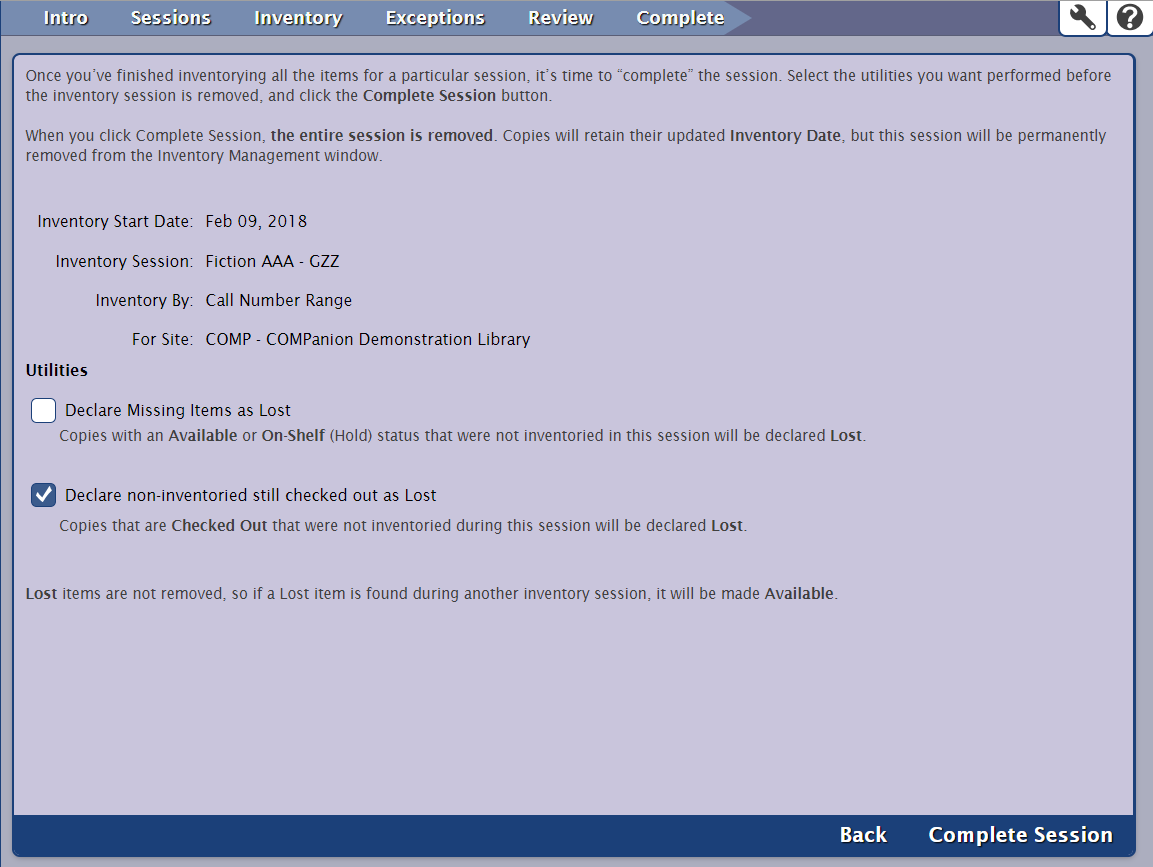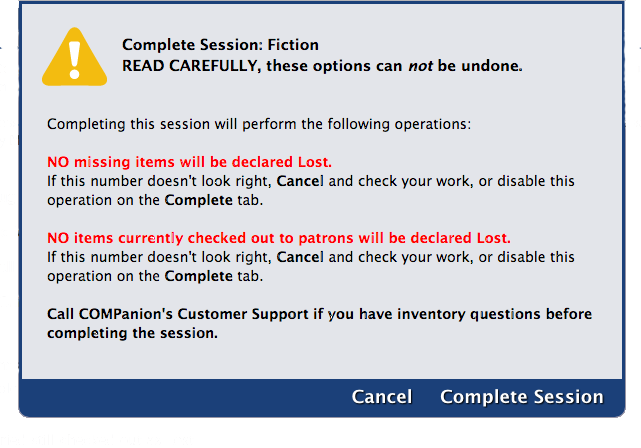How helpful was this page?
Related Blog Posts
Blog Posts
-
Tip compilation: end-of-year edition
created by
May 17, 2023
-
Transaction Scripts–Not just for inventory
created by
Nov 26, 2022
-
End-of-year tips: Item clean up
created by
Apr 26, 2022
-
End-of-year tips: Inventory
created by
Apr 06, 2022
-
Introducing... FAQs!
created by
Jul 07, 2021
-
End-of-year prep—Item clean up
created by
Apr 08, 2020
-
End-of-year prep—Inventory
created by
Mar 25, 2020
-
Mobile inventory—Offline Mode
created by
Apr 26, 2019
-
Let's weed—Pulling discards during Inventory
created by
Apr 12, 2019
-
It’s time—Inventory Articles and Help
created by
Apr 27, 2018
This information (all tabs) has been moved to https://support.goalexandria.com/tools/inventory/ ; specifically https://support.goalexandria.com/tools/inventory/#management
Welcome to Inventory Management
End-of-year inventory procedure doesn't have to be long and painful.
Inventory Management is designed to simplify the inventory process by providing you with convenient access to all of the reporting and utility tools needed to analyze and organize your collection. It allows you to perform site-based inventory sessions, optionally limited by specific Call Number ranges, copy Policy, or copy location.
Performing inventory on your collection can be a lengthy process. Once you have begun an inventory, Alexandria will regularly save all of the information entered until you are finished; we call this an inventory “session”. You can stop or pause your session at any time and when you resume, Alexandria will be ready for you to begin again where you left off. You can create as many sessions as you need to fully inventory your collection. When all sessions are completed, you'll rest easy knowing that your entire collection has been inventoried.
If you're running a Centralized Catalog configuration where each collection is physically housed at a different location, each site must perform their own, independent inventory. A single-site configuration can perform inventory in one large session, or several smaller inventory sessions.
Each time an item is circulated (checked in or out) or inventoried using the Inventory (“I”) or Inventory Bookdrop (“IB”) commands, its Inventory Date is updated.
Sessions
When starting in the Inventory Management window, you must first create an inventory session. Sessions let you break your collection down into smaller sections that make your inventory more manageable. Optionally, these sessions can be based on Call Number ranges, Policy, or Copy Location. Don't worry, however—if you scan items that fall outside a session's selected range, they are still inventoried. Keep in mind, once you have set the Call Number range, Policy or Copy Location it can not be edited (to change it, you'll have to create a new session). If you elected to inventory your Entire Collection but have decided to break it up, you will need to delete the session before creating a new ones.
The Sessions settings will only impact the exception alerts, notes, and reports for each session; for example, you may want audible alerts when inventorying items checked out to System Patrons during one session and not another.
You may select Entire Collection if you are planning to inventory your entire collection in one session (not recommended).
Once an inventory session is complete, you are given the option to run final reports and perform utilities based on the session information selected here. Choosing to inventory your entire collection in a single session may have unintended outcome if you fail to inventory every available item before clicking Complete Session. When finished, the session is considered closed and will be officially removed from the Inventory Sessions list.
The Inventory Date for each copy is updated and stored independently of individual sessions; they are not cleared or discarded when a session is removed. When a session is removed, only the session alert notes and the ability to print inventory exception reports are irrecoverable. However, general inventory reports can always be performed from Reports at any time.
After a session has been completed and removed, all associated inventory reports will be stored and accessible from the Operations Management window for the next 60 (to 90) days.
Site
Inventory Management shows you sessions specific to your site. You can double check this text to make sure you are inventorying at the correct site.
Session Name
The name is only relevant during this session, and will be referenced later during the inventory steps.
Session Start Date
This date is set when you scan your first item. Usually, that's what you want, but occasionally you may need to move the date back to cover other items you have scanned elsewhere. Use the Modify Session Start Date button to change the date.
Inventory By
Set the parameters for your session. Call Number Range, Copy Policy, Copy Location, or Entire Collection will determine what Alexandria understands you want to be included in this inventory session. Session reports, exceptions, and utilities will all rely on this setting.
Alerts
Pick the type of alerts you want as you inventory items in this session.
Bookdrop items scanned during inventory
When this is checked, Alexandria bookdrops items found during inventory that are currently checked out to patrons (not counting hold requests), including items designated as Lost, On Repair, On Order, In Processing, In Transit, or items checked out to the Unknown or System Administrator system patrons. However, items that are Discarded, For Library Use, or Archived will not be bookdropped. Usually, this option is checked, unless for example you are scanning items in a teacher's classroom (and want the items to remain checked out to the teacher).
Inventory
Next, scan all of the items in the Call Number range specified for this session. As you scan items, they will appear in the log below with those most recently scanned at the top of the list. If your copies are shelved in the proper call number order with statuses of Available, you should rarely encounter any Exception Note entries.
However, when an item is found out of call number order, has a status other than Available, or any other detectable irregularity discovered during this session, an Exception Note is recorded to the log and those entries are kept for the duration of the inventory session.
Although the visible log is limited in size and does not show your previous, off-screen progress, exceptions will be recorded as part of the session, and Inventory Dates are updated for each copy scanned.
Exceptions
Problems encountered during inventory are called exceptions — Problems include things like scanned items that are checked out to a System Patron, from the wrong site, are out of Call Number order, are not of the specified policy, or have an unknown barcode. The Exceptions tab provides a summary and tallies the number of Exception Notes triggered during the current session.
Include Exceptions From
The selection you make from this drop-down menu will filter the Exceptions tab to only include exceptions for All Days, Last 7 Days, Yesterday, and Today.
Exceptions are grouped by type. Click on the type to view (and print) a list of items that caused the exception.
Export All Exceptions
Export a .txt file that details the exceptions for this inventory session, including date, time, call number, barcode, title, and note. The .txt file can be opened in a spreadsheet for further data manipulation. It's a great way to evaluate the information for discrepancies so you can clean up your data.
Review
The Review tab is used to prepare and process helpful summary reports detailing the items inventoried during the current session.
Email Reports to. Enter the email address(es) to which you want to send the selected reports. Separate multiple email addresses with a comma.
| Reports | Description |
|---|---|
| Inventoried Items Report | Creates a list of barcode for all of the inventoried copies in the call number range you specified in the Sessions tab settings. |
| Missing Items Report | A report that includes all copies with Available statuses which have not been inventoried, but belong in your specified call number range. |
| Site Inventory Statistics Summary Report | Displays inventory statistics for the entire site, not just this session. |
| Site System Patrons Analysis | Displays site-based inventory statistics for items checked out to system patrons. |
When you're ready, click Run Selected Reports, then go to Operations to view the progress and download the completed PDF(s).
See also Inventory Reports.
Complete
All the settings for this session will be cleared when you click Complete Session. Copies will retain their updated Inventory Date, but this session will be removed from the Inventory Management window.
Start the video at 1:55 for information on the Complete tab.
Once you've finishing inventorying all the items for a particular session, it's time to “complete” the session. If you’re satisfied with the results, the utility operations (detailed below) can be scheduled to run automatically before the inventory session is removed. Once you’ve selected the utilities you want performed, click the Complete Session button.
Completing an inventory session can not be undone. During this process, all selected utilities are scheduled and the inventory session will be removed. The copies inventoried during this session retain their new Inventory Date and are not otherwise modified.
Utilities
- Declare missing items as Lost. This utility moves copies with Available statuses that were not inventoried this session to the Lost system patron. If these items have been misplaced, they may be found during other inventory sessions.
- Declare not-inventoried items still checked out as Lost. This utility declares copies that were not inventoried during this session and are currently checked out to patrons other than the System Patrons (barcodes #1-10) as Lost. These items, which may have been improperly bookdropped, are sometimes located during other inventory sessions.
The Complete Session dialog will show you an estimated number of items that will be declared lost according to your selections here. READ IT CAREFULLY—don't declare a bunch of items lost accidentally!!!


